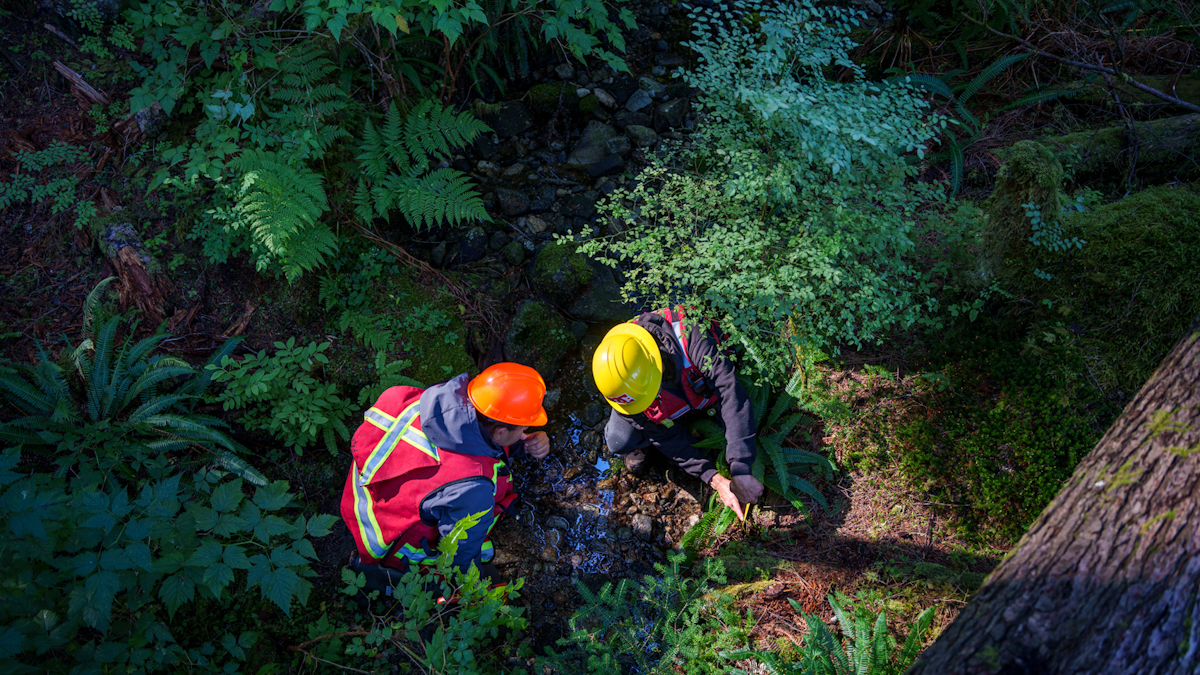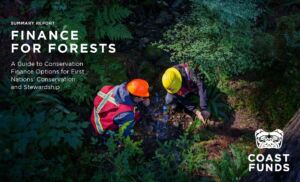Estimated Reading time

2 Mins
Finance for Forests: A Guide to Conservation Finance Options for First Nations
New Coast Funds report highlights conservation finance tools that can support First Nations in achieving their stewardship and conservation goals

Today, Coast Funds, an Indigenous-led conservation finance organization serving First Nations in the Great Bear Rainforest and Haida Gwaii, releases Finance for Forests, a guide to financing First Nations’ conservation, stewardship, and Guardian programs. The report addresses a key question facing First Nations and other governments – how can communities conserve forest ecosystems without compromising economic security? – and presents options for financing stewardship and addressing related community priorities.

This research comes as the Province of British Columbia works with First Nations on agreements to defer logging in old-growth forests and modernize forestry practices to support ecosystem health. At the same time, Crown governments and philanthropic funders have announced new funding for nature protection, in alignment with Canada’s international commitments to biodiversity and habitat restoration.
“Many of the First Nations we serve in the Great Bear Rainforest and Haida Gwaii have ambitious plans for new Indigenous protected and conserved areas and for growing their Guardian programs,” says Eddy Adra, CEO, Coast Funds. “To sustain their stewardship programs, First Nations need access to diversified funding sources, including conservation trusts, grants, and carbon credits. Newer tools could also play a role in filling funding gaps, which is why the report considers payments for ecosystem services and novel tools like salmon impact bonds.”
To sustain their stewardship programs, First Nations need access to diversified funding sources.
In Finance for Forests, Coast Funds lists opportunities for First Nations to access and develop conservation financing, and evaluates each option by amount of revenue, flexibility, impact on a Nation’s self-determination, and ability to support different project stages. Recognizing that First Nations often need to combine multiple conservation finance tools, the report features four sample conservation finance portfolios that illustrate how First Nations (or groups of Nations) might assemble financing to cover both short-term costs for conservation and restoration, as well as generate long-term revenue for ongoing stewardship.
“Lines on a map don’t protect places – people do,” says Doug Neasloss, elected Chief Councillor of Kitasoo Xai’xais Nation, which works with Coast Funds. “Our community has a vision for stewardship where the wealth of forests, fish, and wildlife will be here forever – and our people will be here forever. To achieve that vision, we’re working with government and philanthropy to secure investments in conservation and stewardship, which creates meaningful employment opportunities for current and future generations.”
Through Coast Funds, participating First Nations have invested over $118 million toward 474 conservation, stewardship, and sustainable economic development projects in the Great Bear Rainforest and Haida Gwaii. Through these investments, First Nations are building a conservation economy and have supported 138 businesses in a range of sectors, created nearly 1,300 new jobs in coastal communities, carried out nearly 400 research and habitat restoration initiatives, and have sustained 18 Guardian and regional monitoring programs in their territories.
—
Downloads:
